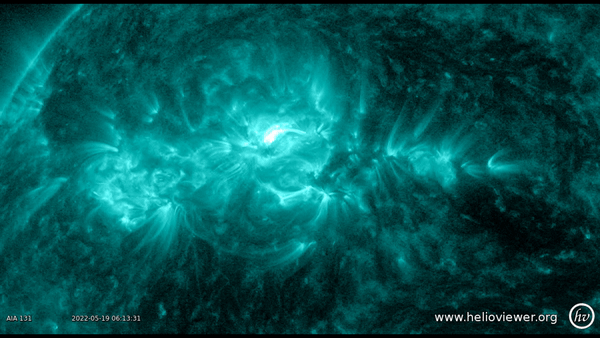
Sun busts out trio of moderate solar flares that might herald more activity (Image Credit: Space.com)
A trio of moderate flares blasted off from the sun on Thursday (May 19), and there might be more in store.
The solar flares come amid a noticeable uptick in solar activity in recent months. SpaceWeather.com says a storm is swirling around sunspot AR3014, to the extent that the region is “literally seething.” As the magnetic lines twist and tangle, they may snap and send a coronal mass ejection towards our planet.
Forecasters with the National Oceanic and Atmospheric Administration (NOAA), wrote SpaceWeather, “estimate a 35% chance of M-class solar flares and a 15% chance of X-flares on May 19.”
Related: The sun’s wrath: Worst solar storms in history

X-flares are the strongest possible class of flares, and should they erupt from this particular sunspot, they would be “geoeffective” due to the sunspot facing Earth. Flares are often accompanied by CMEs, which would arrive a little later.
So far scientists have seen a flurry of X-rays associated with the M-class flares, as captured by NOAA’s Geostationary Operational Environmental Satellite-16 (GOES-16) satellite that monitors the Americas.
The sun seems to have woken up in early 2022 as it moves towards the peak of its solar cycle in 2025. It has fired off numerous flares in recent weeks, including a few X-class ones.

Usually the CMEs following flares are harmless and just create colorful auroras high up in the atmosphere. But in some very rare cases, they can disrupt satellites, power lines and other infrastructure. So scientists keep gazing at the sun to assess its dynamics and to predict space weather as best as possible.
In the United States, for example, both NASA and NOAA look at the sun all the time. A sungazing mission known as Parker Solar Probe is sweeping in close to look at the corona or superheated outer region of the sun, as other satellites watch from further afield to gain context.
Follow Elizabeth Howell on Twitter @howellspace. Follow us on Twitter @Spacedotcom or on Facebook.




